Yokila Arora
LLM-driven Constrained Copy Generation through Iterative Refinement
Apr 14, 2025Abstract:Crafting a marketing message (copy), or copywriting is a challenging generation task, as the copy must adhere to various constraints. Copy creation is inherently iterative for humans, starting with an initial draft followed by successive refinements. However, manual copy creation is time-consuming and expensive, resulting in only a few copies for each use case. This limitation restricts our ability to personalize content to customers. Contrary to the manual approach, LLMs can generate copies quickly, but the generated content does not consistently meet all the constraints on the first attempt (similar to humans). While recent studies have shown promise in improving constrained generation through iterative refinement, they have primarily addressed tasks with only a few simple constraints. Consequently, the effectiveness of iterative refinement for tasks such as copy generation, which involves many intricate constraints, remains unclear. To address this gap, we propose an LLM-based end-to-end framework for scalable copy generation using iterative refinement. To the best of our knowledge, this is the first study to address multiple challenging constraints simultaneously in copy generation. Examples of these constraints include length, topics, keywords, preferred lexical ordering, and tone of voice. We demonstrate the performance of our framework by creating copies for e-commerce banners for three different use cases of varying complexity. Our results show that iterative refinement increases the copy success rate by $16.25-35.91$% across use cases. Furthermore, the copies generated using our approach outperformed manually created content in multiple pilot studies using a multi-armed bandit framework. The winning copy improved the click-through rate by $38.5-45.21$%.
Chaining text-to-image and large language model: A novel approach for generating personalized e-commerce banners
Feb 28, 2024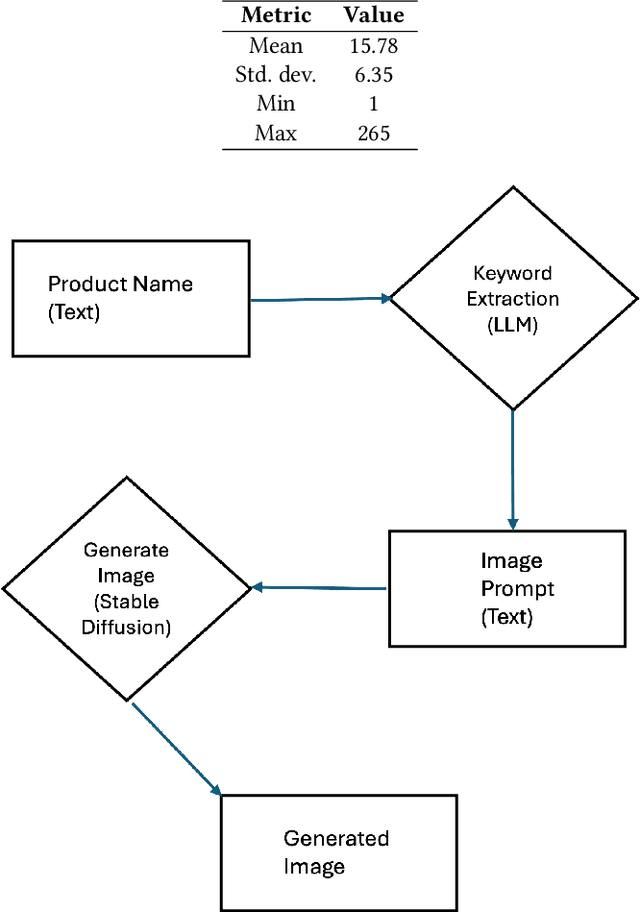


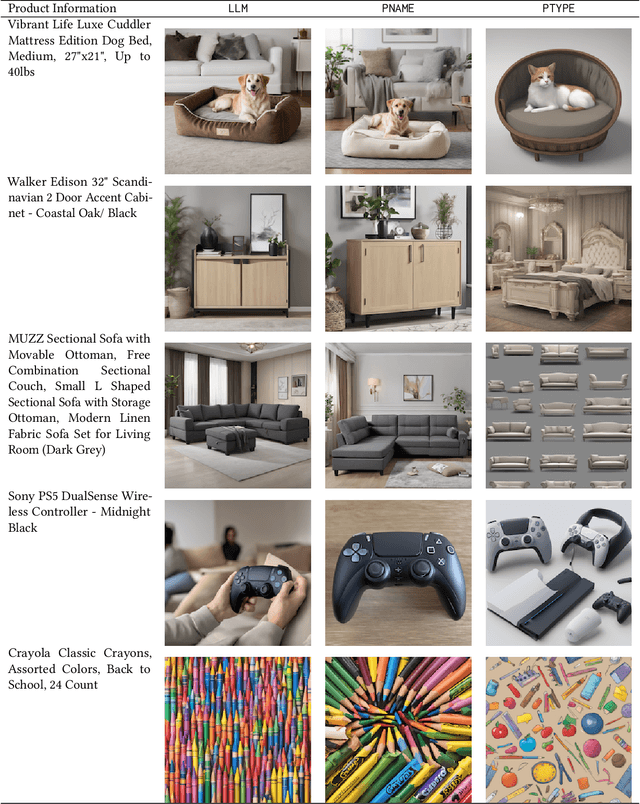
Abstract:Text-to-image models such as stable diffusion have opened a plethora of opportunities for generating art. Recent literature has surveyed the use of text-to-image models for enhancing the work of many creative artists. Many e-commerce platforms employ a manual process to generate the banners, which is time-consuming and has limitations of scalability. In this work, we demonstrate the use of text-to-image models for generating personalized web banners with dynamic content for online shoppers based on their interactions. The novelty in this approach lies in converting users' interaction data to meaningful prompts without human intervention. To this end, we utilize a large language model (LLM) to systematically extract a tuple of attributes from item meta-information. The attributes are then passed to a text-to-image model via prompt engineering to generate images for the banner. Our results show that the proposed approach can create high-quality personalized banners for users.
A Real-Time Whole Page Personalization Framework for E-Commerce
Dec 08, 2020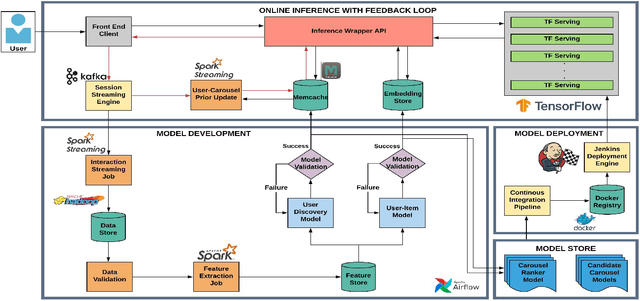
Abstract:E-commerce platforms consistently aim to provide personalized recommendations to drive user engagement, enhance overall user experience, and improve business metrics. Most e-commerce platforms contain multiple carousels on their homepage, each attempting to capture different facets of the shopping experience. Given varied user preferences, optimizing the placement of these carousels is critical for improved user satisfaction. Furthermore, items within a carousel may change dynamically based on sequential user actions, thus necessitating online ranking of carousels. In this work, we present a scalable end-to-end production system to optimally rank item-carousels in real-time on the Walmart online grocery homepage. The proposed system utilizes a novel model that captures the user's affinity for different carousels and their likelihood to interact with previously unseen items. Our system is flexible in design and is easily extendable to settings where page components need to be ranked. We provide the system architecture consisting of a model development phase and an online inference framework. To ensure low-latency, various optimizations across these stages are implemented. We conducted extensive online evaluations to benchmark against the prior experience. In production, our system resulted in an improvement in item discovery, an increase in online engagement, and a significant lift on add-to-carts (ATCs) per visitor on the homepage.
A Large-Scale Deep Architecture for Personalized Grocery Basket Recommendations
Nov 13, 2019
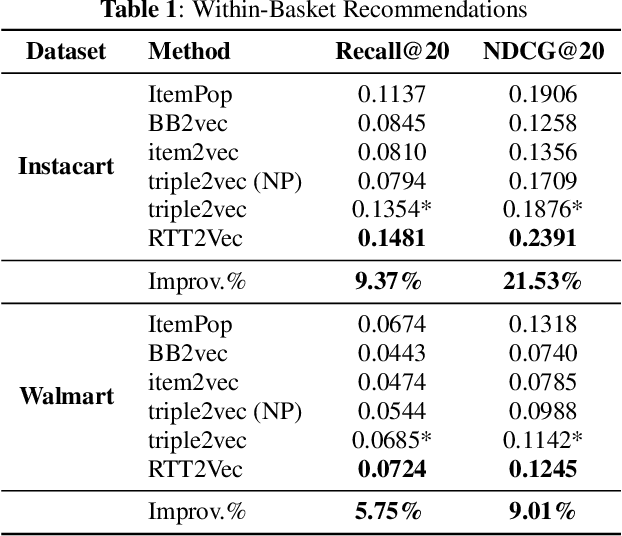
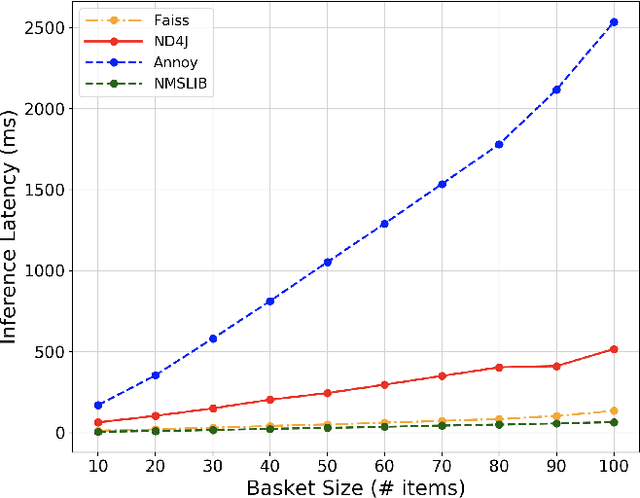
Abstract:With growing consumer adoption of online grocery shopping through platforms such as Amazon Fresh, Instacart, and Walmart Grocery, there is a pressing business need to provide relevant recommendations throughout the customer journey. In this paper, we introduce a production within-basket grocery recommendation system, RTT2Vec, which generates real-time personalized product recommendations to supplement the user's current grocery basket. We conduct extensive offline evaluation of our system and demonstrate a 9.4% uplift in prediction metrics over baseline state-of-the-art within-basket recommendation models. We also propose an approximate inference technique 11.6x times faster than exact inference approaches. In production, our system has resulted in an increase in average basket size, improved product discovery, and enabled faster user check-out
 Add to Chrome
Add to Chrome Add to Firefox
Add to Firefox Add to Edge
Add to Edge